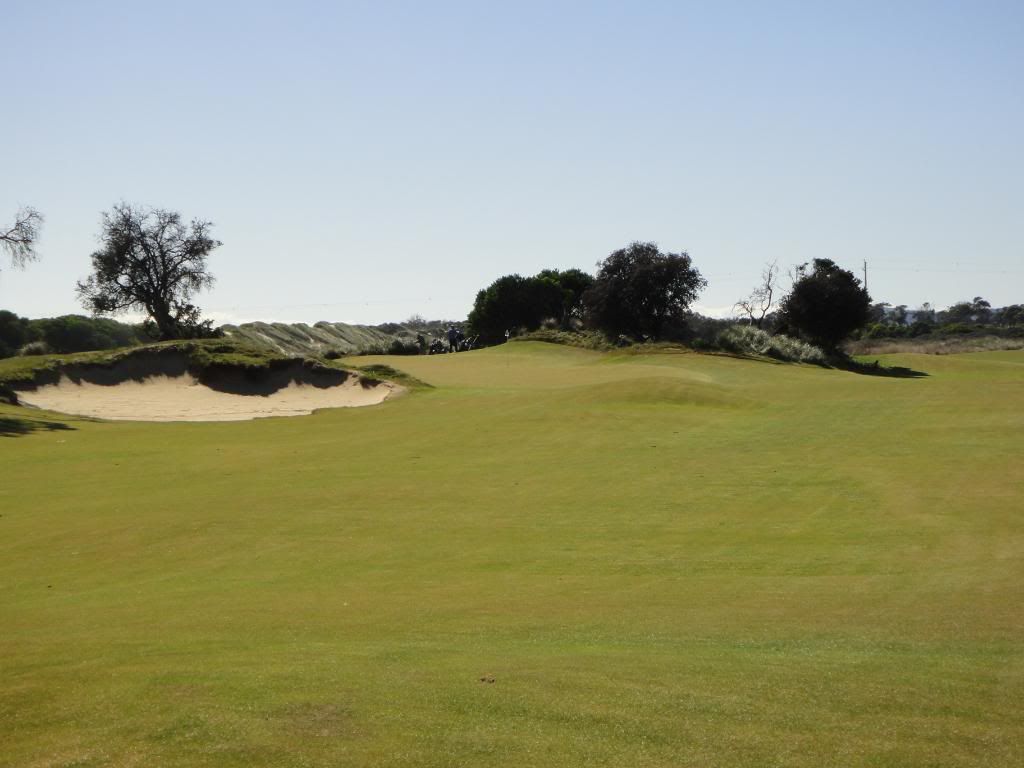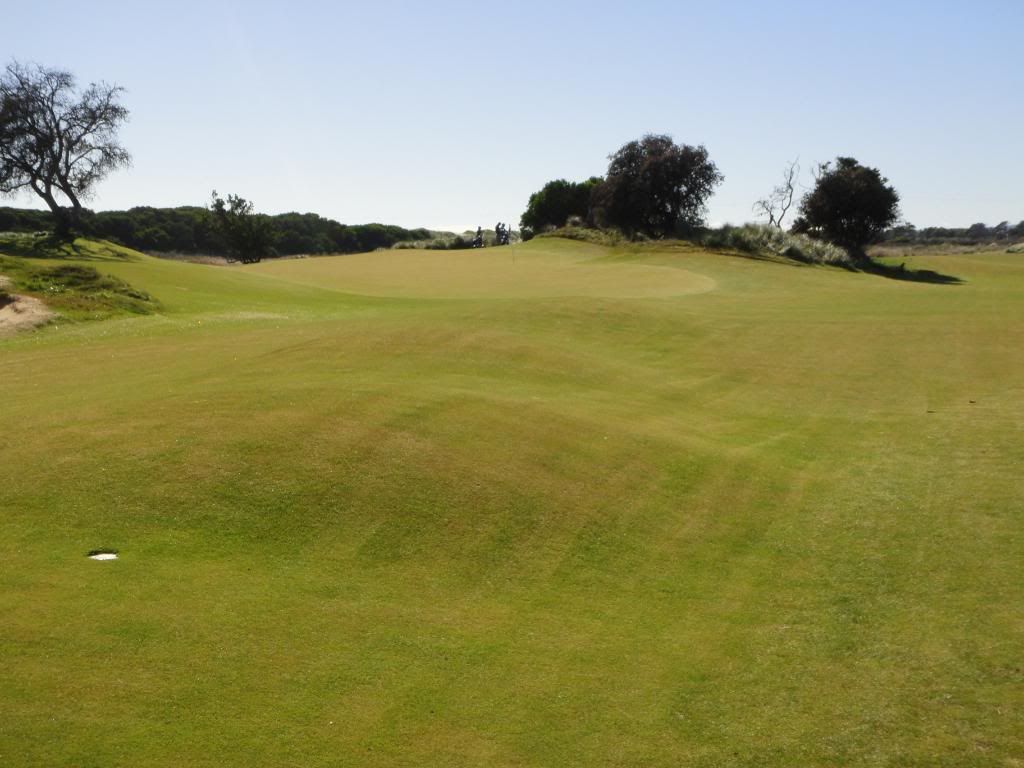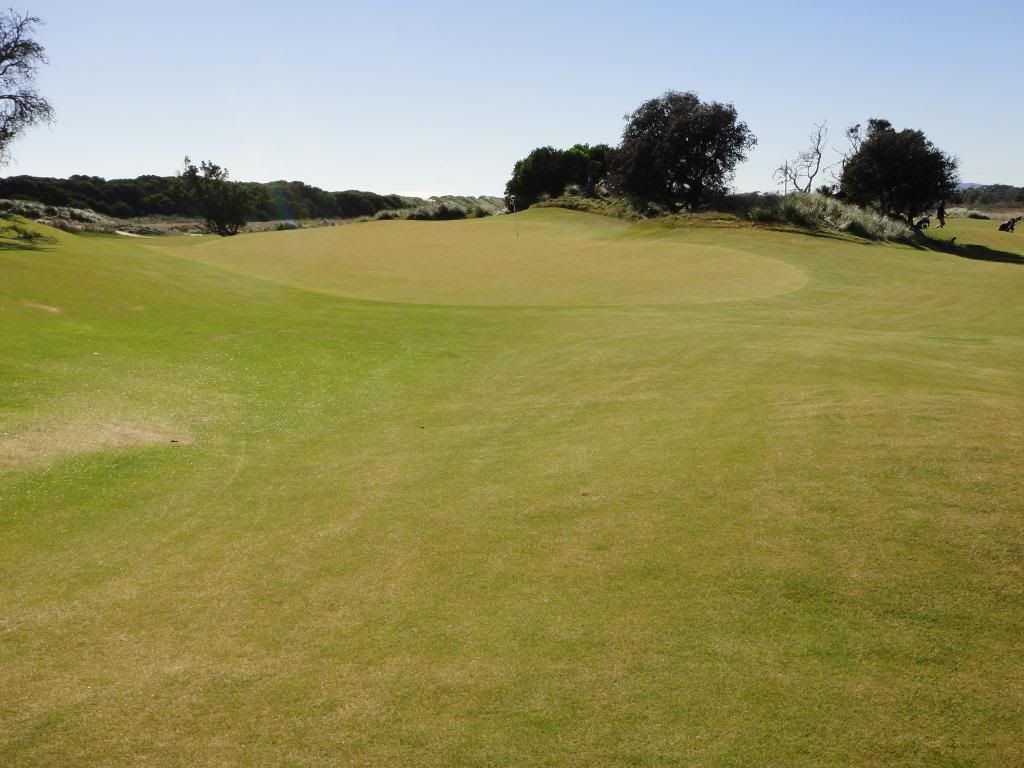Tom touches on my thought, with the one hole context. But, no one has mentioned how this hole fits into the sequence of holes. Tom also suggests that this hole tempts the player to go for it in two. Since I haven't been to Tasmania, maybe i'm not allowed to comment, but, from the descriptions, and knowing the tendencies of players, (MK, C&C) what's wrong with a hole like this? If it's a breather in a tough sequence, it works. If it's about the view, it works. If it's one of those holes that the player sees on paper and thinks "easy" yet walks off with bogie or worse, what's wrong with that?
Perhaps it's a transition hole to get to a better hole or sequence of holes in the entirety of the whole?
So much to think about...
Right on Adam. I mentioned in the other LF thread the following in reference at the time to the 13th and 16th:
Agreed they break up the action and kind of build up the barometer for what's ahead. Both of those holes feel more about the helping out the routing to me.To me that's what it feels like on this stretch of "farm land" holes that kicks off the back nine.
The 10th through 13th kind of direct the routing back to the 13A / 14th.
Are they great holes? No... Good holes, yes. Is the land great? No..., but you explore the property more completely. You feel like on a journey.
The question for me I guess is how many holes becomes too many holes between strong holes and tamer ones. Three in succession might be one too many perhaps. I liked how the 1st and 2nd kind of built up the 3rd. I did not anticipate the 14th as much as the 3rd.
David,
Not criticizing, but asking...
Is there no challenge in ball placement off the tee? That to me is the challenge off the tee on this hole. I'm with Matt on this one.
If you go straight and too deep, you're in that pit of a bunker. Go right of it ... and you can be blind going towards the green. If you decide to cut the corner left and challenge the ridge ... you're taking a risk of not making it, but the payoff can be a chance at going for two into the green.
So you have to decide off the tee your strategy for the day. Throw in the wind and maybe the decision becomes a little more simplistic, but I'm not sure. We had nay wind that day.
That's why I liked this tee shot.
The placement and shaping of the green is pretty good I feel. I agree with what's said about going right on the fairway as far down as possible to open up the green more. Which means you would have had to have taken on the left ridge for your tee shot. The other thing is the green from center fairway to left of center runs much wider than it runs deep and I'll venture to guess many will go for it in two shots not knowing this.
So again on the second shot from a good fairway position, you need to consider if going for two is worth it. If you're not further enough down the right, it's probably NOT worth going for given the risk. You can easily lull yourself into a false sense of security I think if you're not too careful.
Agree about the trees. Not a fan and never really have been of trees as hazards ... especially around greens.
But still ... a good hole I feel with a pretty good green within the routing back to the coast. Just not great and probably not in a position to produce one of their best par 5s given the land to work with too I would say, but that's just a guess.
Kalen,
Here's a pic about 100 yards or so short of the green left along with a couple others as you move in close:



